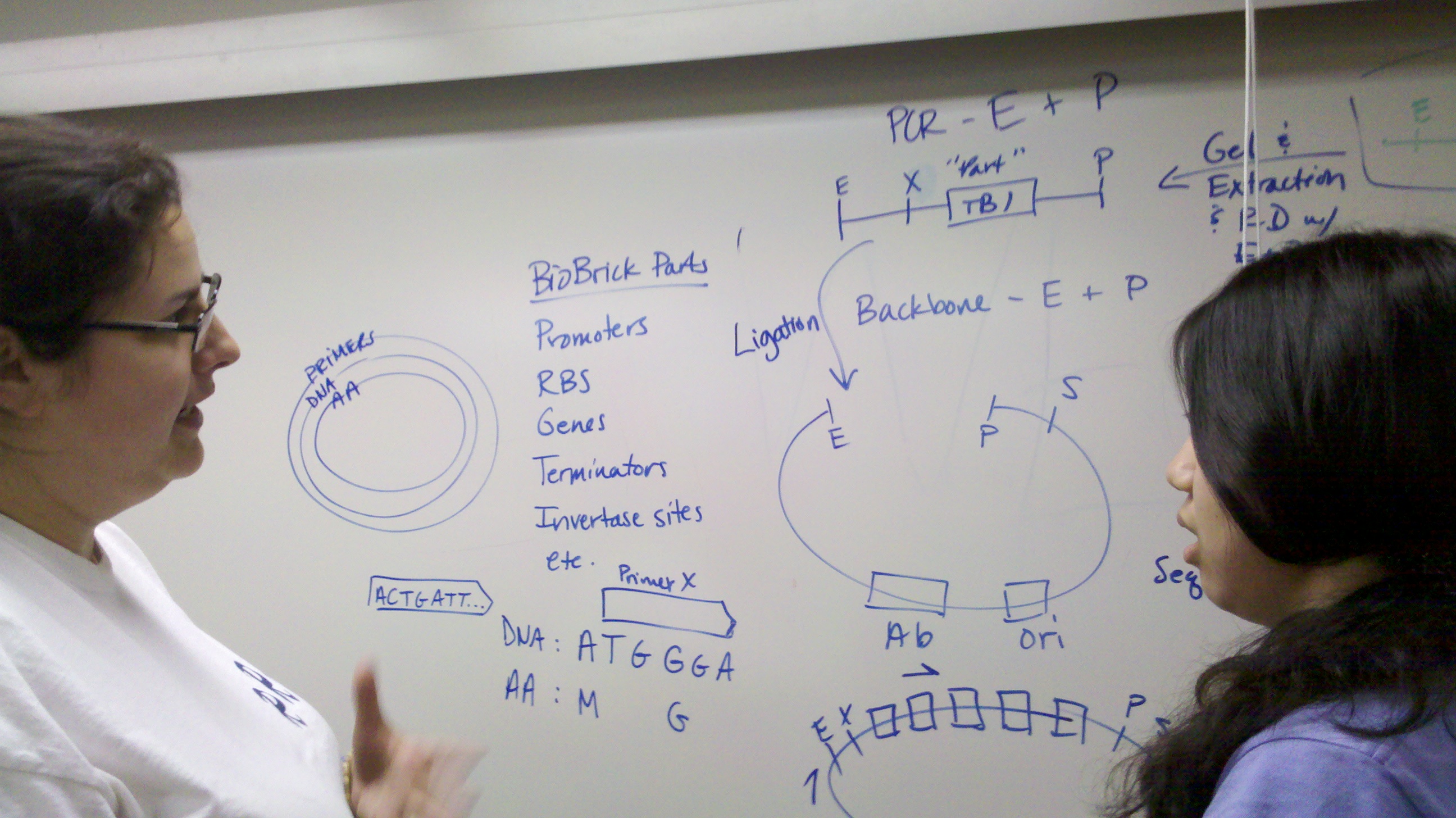Team:BU Wellesley Software/Methodology
From 2011.igem.org
| Line 92: | Line 92: | ||
<a href="#overview">Tool Overview</a><br> | <a href="#overview">Tool Overview</a><br> | ||
<a href="#process">Design Process</a><br> | <a href="#process">Design Process</a><br> | ||
| - | |||
| - | |||
</div> | </div> | ||
| Line 117: | Line 115: | ||
<li>Looked at competitive products | <li>Looked at competitive products | ||
| - | |||
<li>Created user profiles | <li>Created user profiles | ||
| - | |||
<li>Developed a task analysis | <li>Developed a task analysis | ||
| - | |||
<li>Documented user scenarios | <li>Documented user scenarios | ||
</ul> | </ul> | ||
<h2>Design</h2> | <h2>Design</h2> | ||
| - | << | + | |
| + | <img src="http://cs.wellesley.edu/~hcilab/iGEM_wiki/images/BrainstormSession627/2011-06-27_15-55-47_983.jpg" width="260px"> | ||
| + | <img src="http://cs.wellesley.edu/~hcilab/iGEM_wiki/images/BrainstormSession627/2011-06-27_15-55-09_632.jpg" width="260px"> | ||
| + | <img src="http://cs.wellesley.edu/~hcilab/iGEM_wiki/images/BrainstormSession627/image4.jpg" width="260px"> | ||
| + | |||
| + | |||
<ul> | <ul> | ||
<li>Brainstormed design concepts and metaphors | <li>Brainstormed design concepts and metaphors | ||
| Line 151: | Line 151: | ||
<li>Considered various quantitative measures (e.g. time on task, subjective satisfaction) and qualitative indicators (e.g. collaboration and problem solving styles demonstrated by users) | <li>Considered various quantitative measures (e.g. time on task, subjective satisfaction) and qualitative indicators (e.g. collaboration and problem solving styles demonstrated by users) | ||
</ul> | </ul> | ||
| - | |||
| - | |||
| - | |||
| - | |||
| - | |||
| - | |||
| - | |||
| - | |||
| - | |||
| - | |||
| - | |||
Revision as of 12:43, 28 September 2011
Methodology
Tool Overview
In our project, we applied a user-centered design (UCD) approach for developing software tools for synthetic biology. In UCD, users are involved throughout all stages of the design process. Thus, extensive attention is given to gather information about users, identify their needs, and to test and refine designs based on users’ feedback. The main goal of UCD is to develop software tools that users find desirable, usable, and useful. Tools that rather than forcing users to adopt their behavior, improve and enhance current practices.
Design Process
Our design process consisted of an iterative cycle that included 4 stages:
<Analysis
Design



Implementation
Evaluation
- Evaluated the usability and usefulness of our software tools by deploying them for use by our wet lab team <>
- Considered various quantitative measures (e.g. time on task, subjective satisfaction) and qualitative indicators (e.g. collaboration and problem solving styles demonstrated by users)
 "
"
